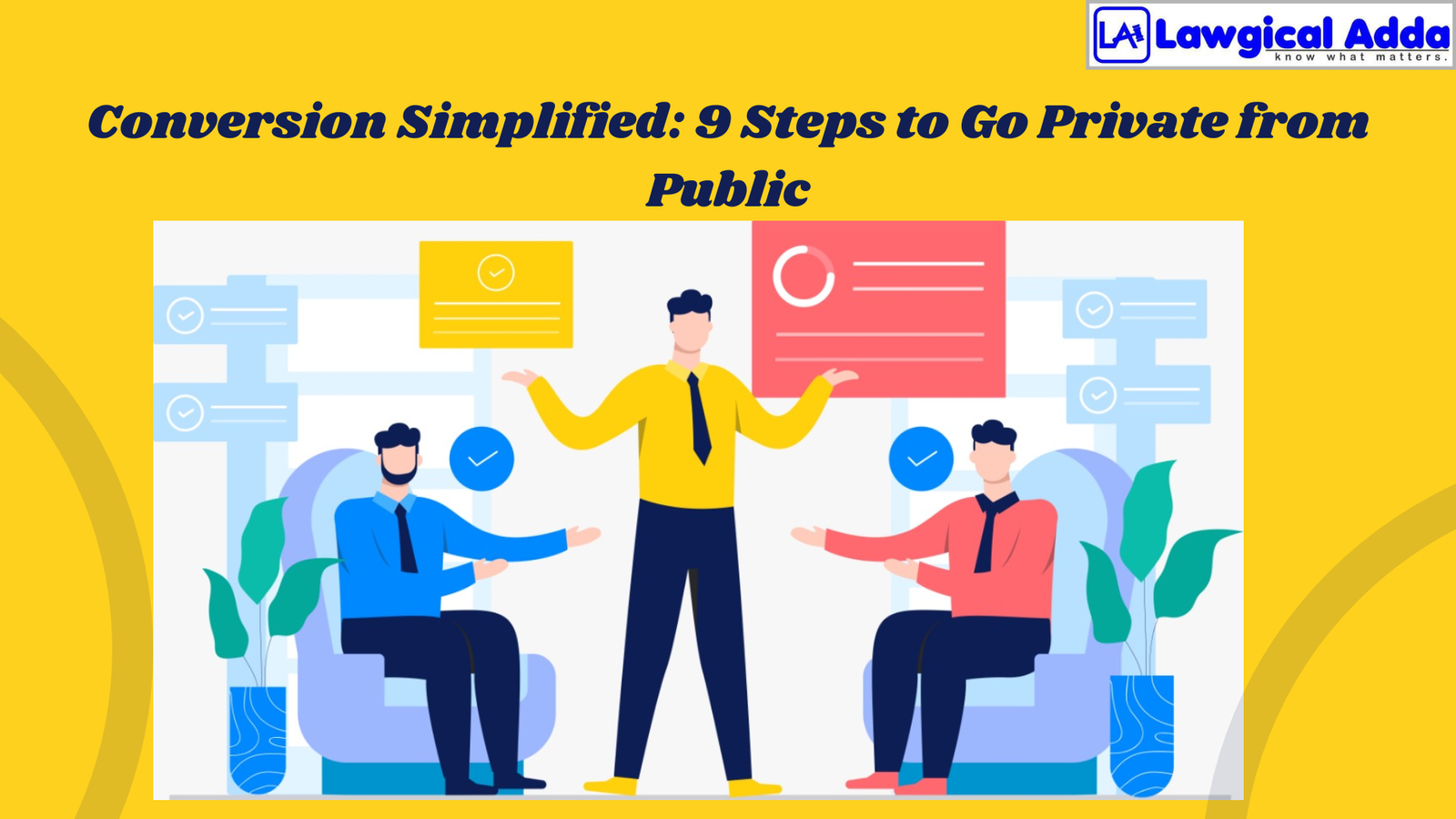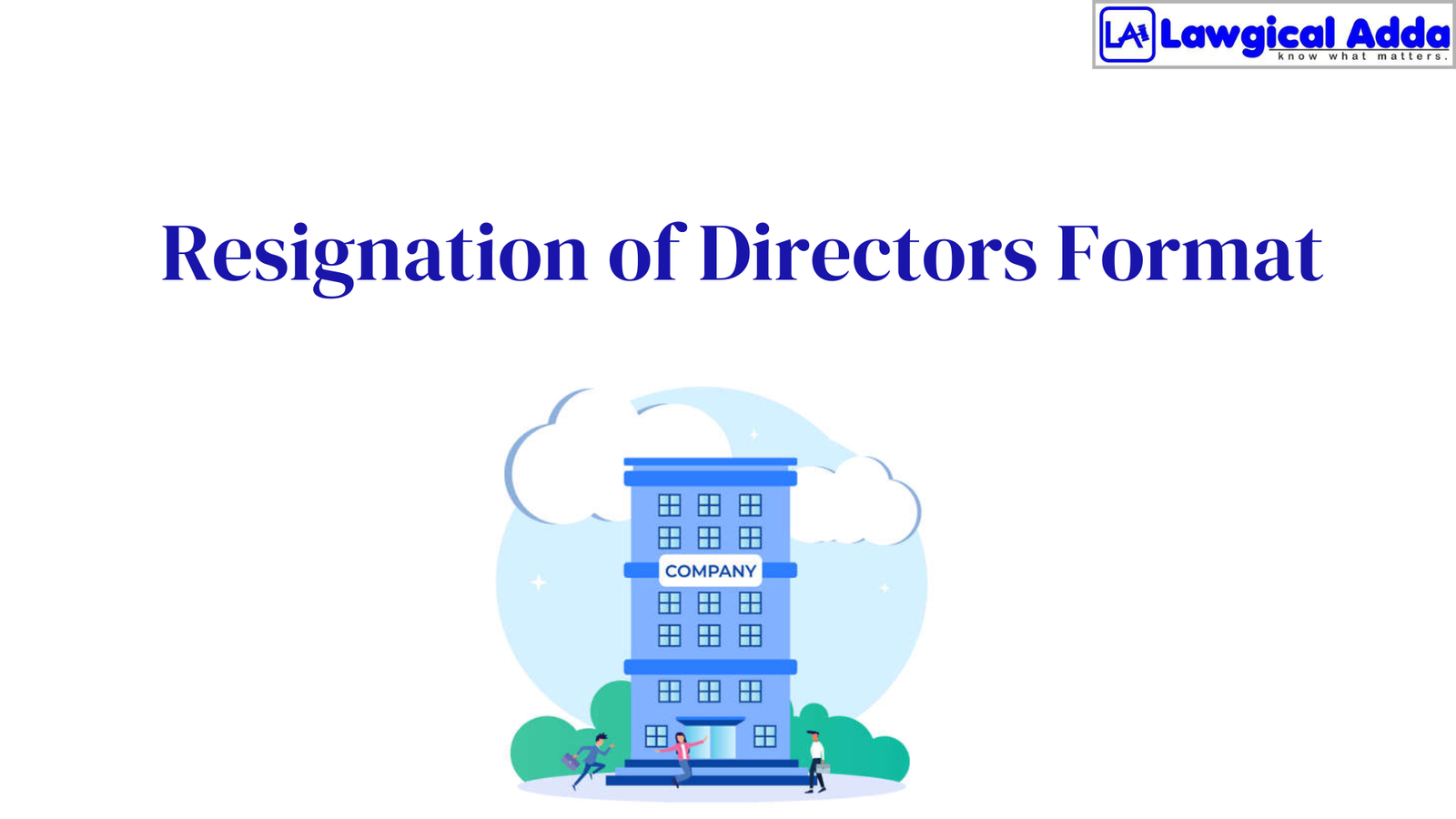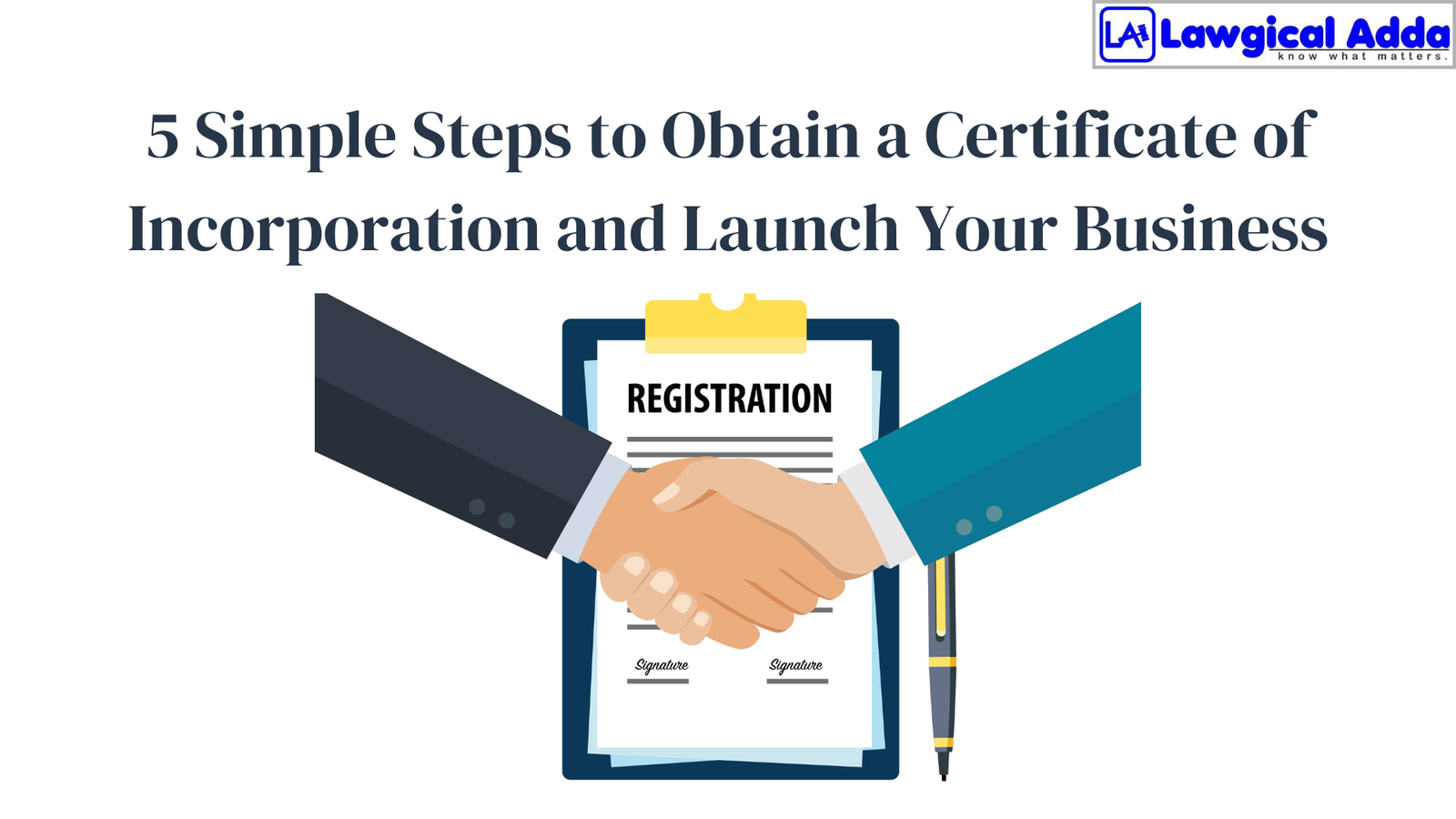Conversion Simplified: 9 Steps to Go Private from Public

Table of Contents
Introduction
A public corporation’s conversion to a private company is governed by the Companies Act of 2013 and is carried out by the Companies Rules of 2014. With regard to public companies, this conversion lessens the regulatory obligations imposed by the Companies Act of 2013.
The authority to convert a public company into a private company was previously vested in the NCLT; however, the Regional Director currently holds this authority.
Laws pertaining to Conversion of Public Company into Private Company
- The Companies Act of 2013’s Section 13:
It is essential to change the company’s memorandum of agreement (MOA) in order to convert a public company to a private company, provided that the MOA permits such a conversion.
- The Companies Act of 2013’s Section 14:
This allows for the modification of the AOA in order to convert a public company into a private business.
- Any registered company may be converted by changing its articles of association and by amending its bylaws, according to Section 18 of the Companies Act of 2013.
- A public company’s conversion to a private company is explained in the Companies Incorporation (Fourth Amendment) Rules, 2014.
The process for turning a public company into a private one
The steps involved in turning a public company into a private company are as follows:
Step 1: The corporation must notify the directors that a board meeting is scheduled, at least seven days in advance of that day.
Step 2: In compliance with Section 173 of the Companies Act of 2013, the Company shall conduct the Board Meeting. The approval of the following items is required:
- To consider the suggestion that a public corporation be converted to a private one.
- To accept modifications to the company’s articles of agreement and bylaws that require special resolution approval from members.
- To determine the day, time, and venue of the general meeting and to give permission to a director or company secretary to notify each member of the gathering.
- To think about and decide to keep the firm’s membership count at 200 a maximum.
Step 3: The Company must convene the General Meeting at least 21 days in advance in order to approve the items listed in Step 2 by enacting a special resolution.
Step 4: To authorize the transformation of a public company into a private company, the corporation must conduct a general meeting. For the modification to the MoA and AoA to be approved, a special resolution must also be passed.
It is necessary to verify the quorum at the general meeting. An auditor must attend the general meeting in accordance with Section 146 of the Companies Act of 2013; if they are unable to do so, they should confirm whether a leave of absence has been granted.
Step 5: After the special resolution is approved, the form MGT-14 needs to be submitted within 30 days. The Form MGT-14 should have the following documents appended to it:
- A real, verified copy of the modified memorandum of agreement
- Modified authentic certified copy of AoA
- General Meeting Notification with an Explanation
- A genuine, certified copy of the Special Resolution that was adopted in the General Assembly
Step 6: After the special resolution is passed, an application must be sent to the regional director within sixty days. The e-Form RD-1 must be used to submit the application. The following files must be sent with the application:
- A copy of the AoA and MoA with suggested modifications.
- A duplicate of the general meeting’s minutes.
- The Board Resolution authorizing the Conversion.
- It is necessary to provide a list of creditors and debenture holders.
Step 7: In accordance with Rule 41(3) of the Companies (Incorporation) Rules, 2014, the application must include a List of Creditors and Debenture Holders. This list must be updated as soon as it is practically possible before the petition filing date, but no later than 30 days.
In the meanwhile, a form INC-25A, an English daily widely circulated throughout the State, and a vernacular newspaper in the district’s vernacular tongue should all market the application.
Step 8: If the public company is to be converted into a private company, a Regional Director must receive a request in the electronic form RD-1 within 60 days of the special resolution’s passage date, as per Rule 41(1) of the Companies (Incorporation) Rules, 2014, as amended.
Step 9: Within 30 days of the date on which RD requested that the application be resubmitted, RD may reject the application if the resubmissions are not made. Two revisions maximum are allowed. The Regional Director (RD) may request more information after receiving the material. These resubmissions have to be submitted within 15 days.
Conclusion
A public company’s conversion to a private company offers regulated share transfers, improved ownership control, increased secrecy, streamlined compliance, efficient decision-making, and tailored business plans.
Its operation is made simpler by its exemption from required statutory meetings and freedom in making loans to directors with little to no permission. As a result of this change, the corporate environment is more responsive, focused, and private, all of which support entrepreneurial objectives.
Lawgical Adda has got you covered with their public company and private company services. Our expert team is ready to assist you in navigating the complexities of this conversion, making the process smooth and hassle-free. Trust Lawgical Adda to keep your company compliant and thriving. Contact us today to get started!







